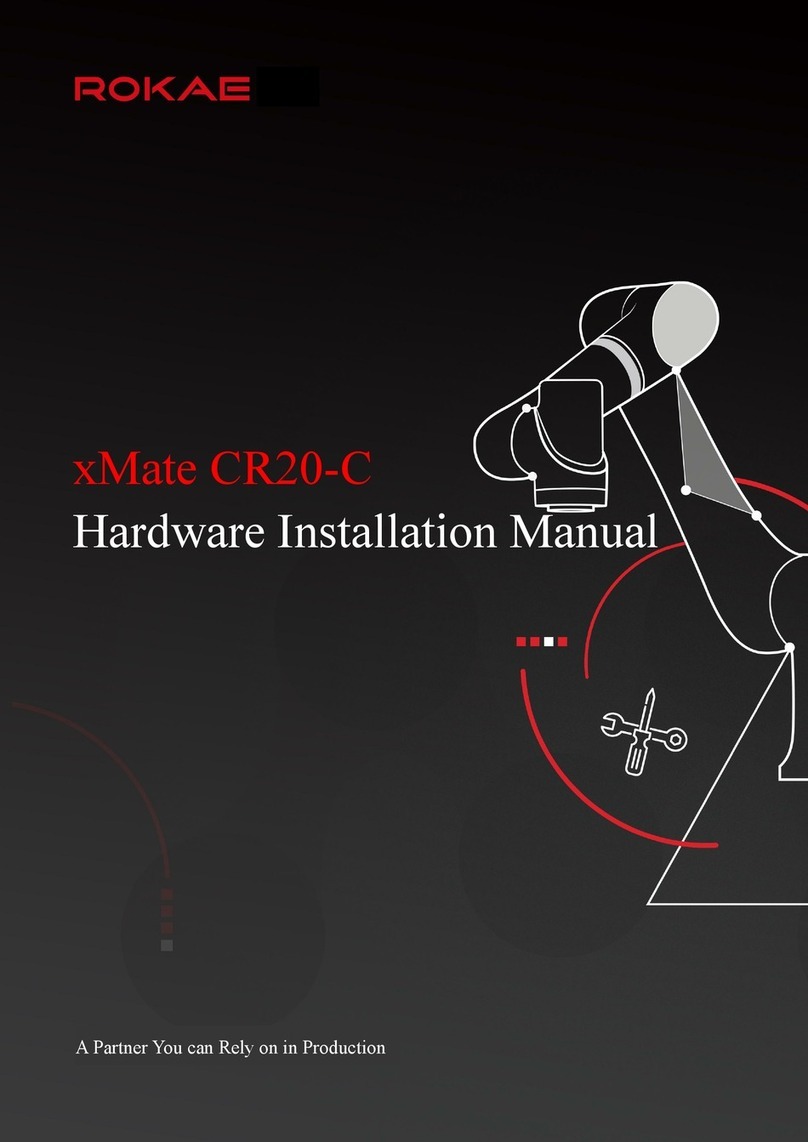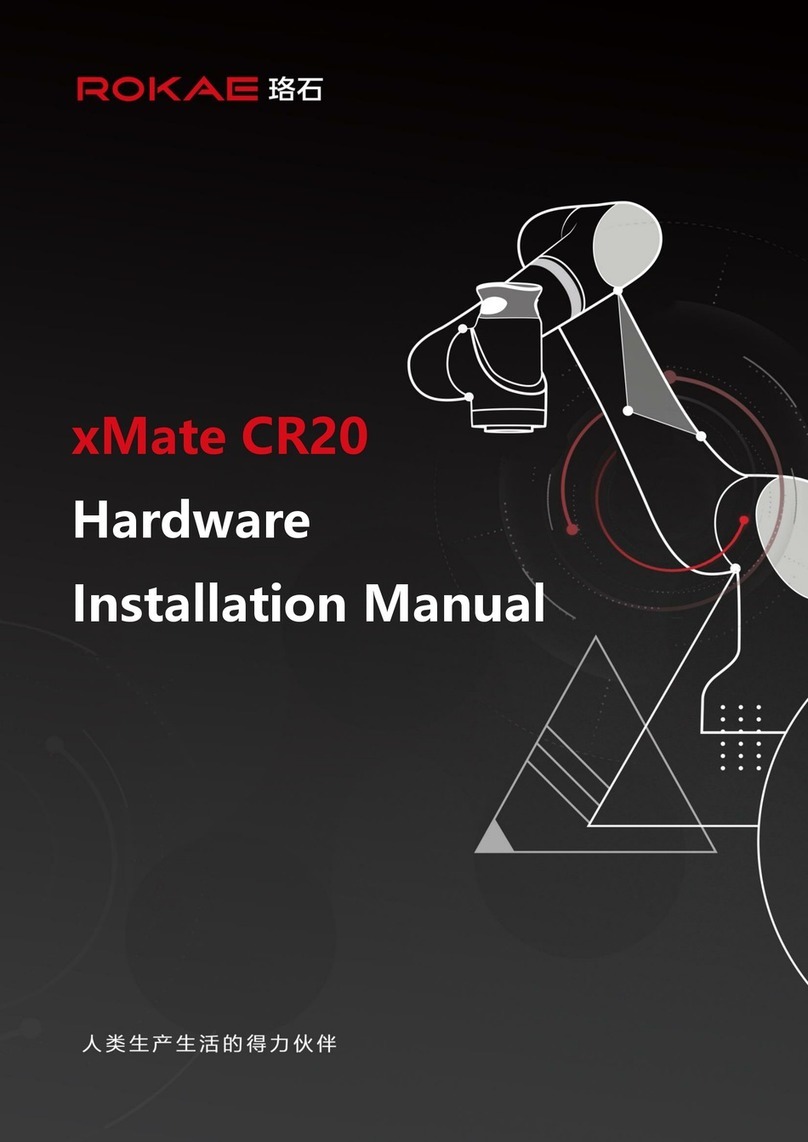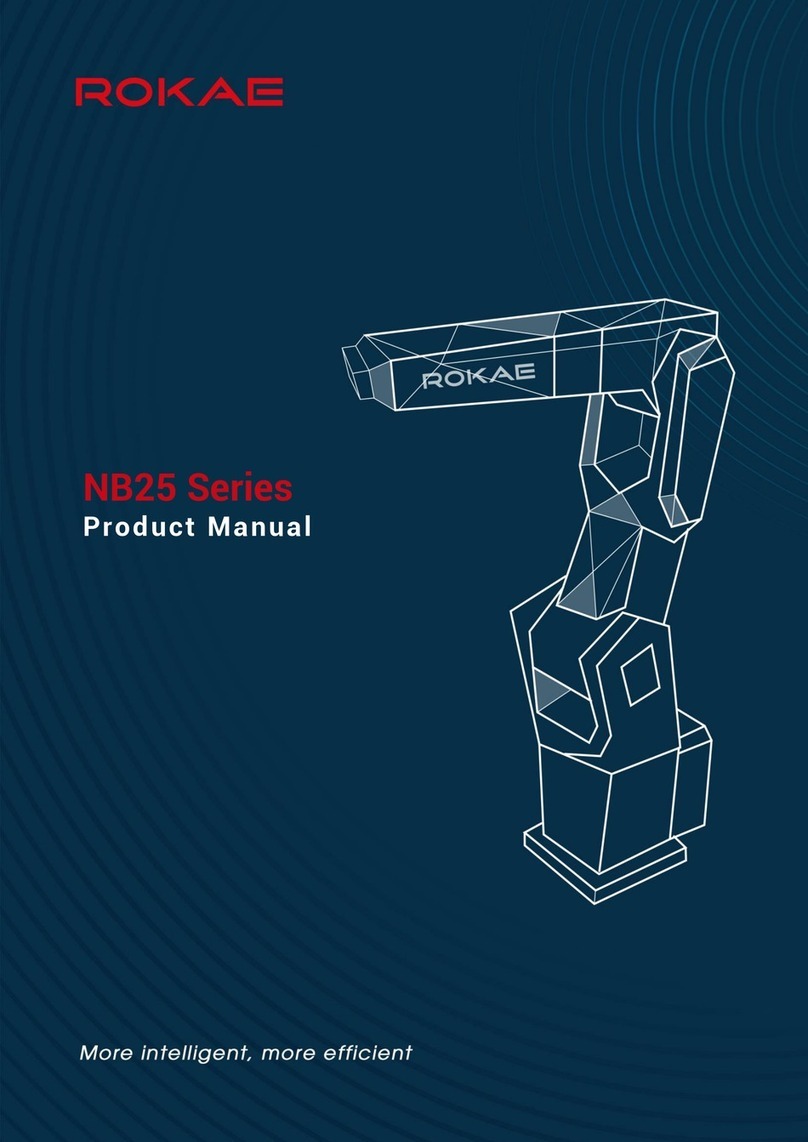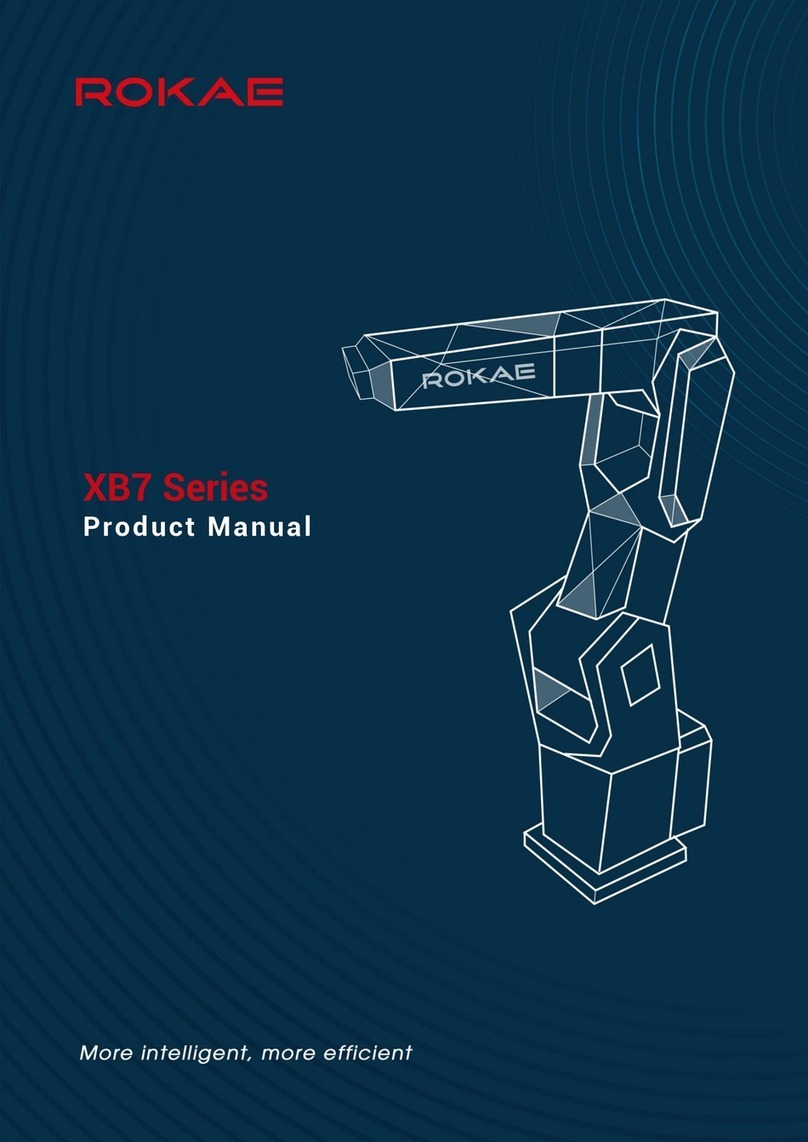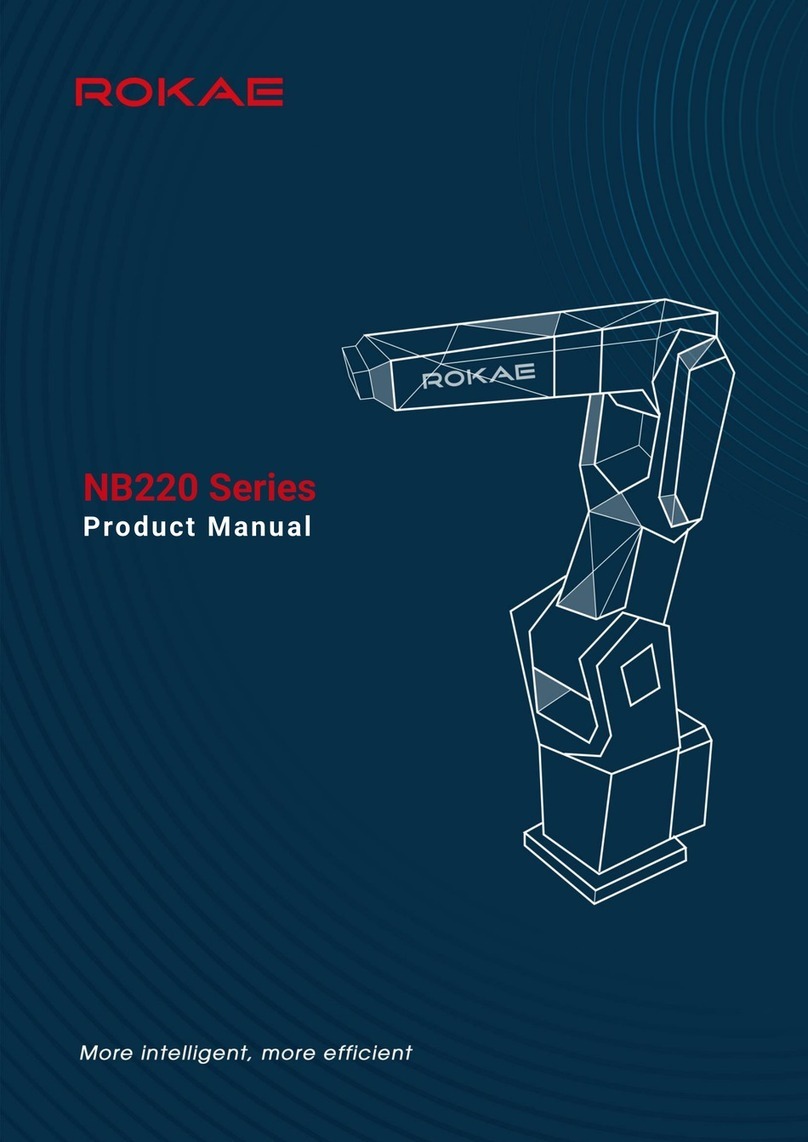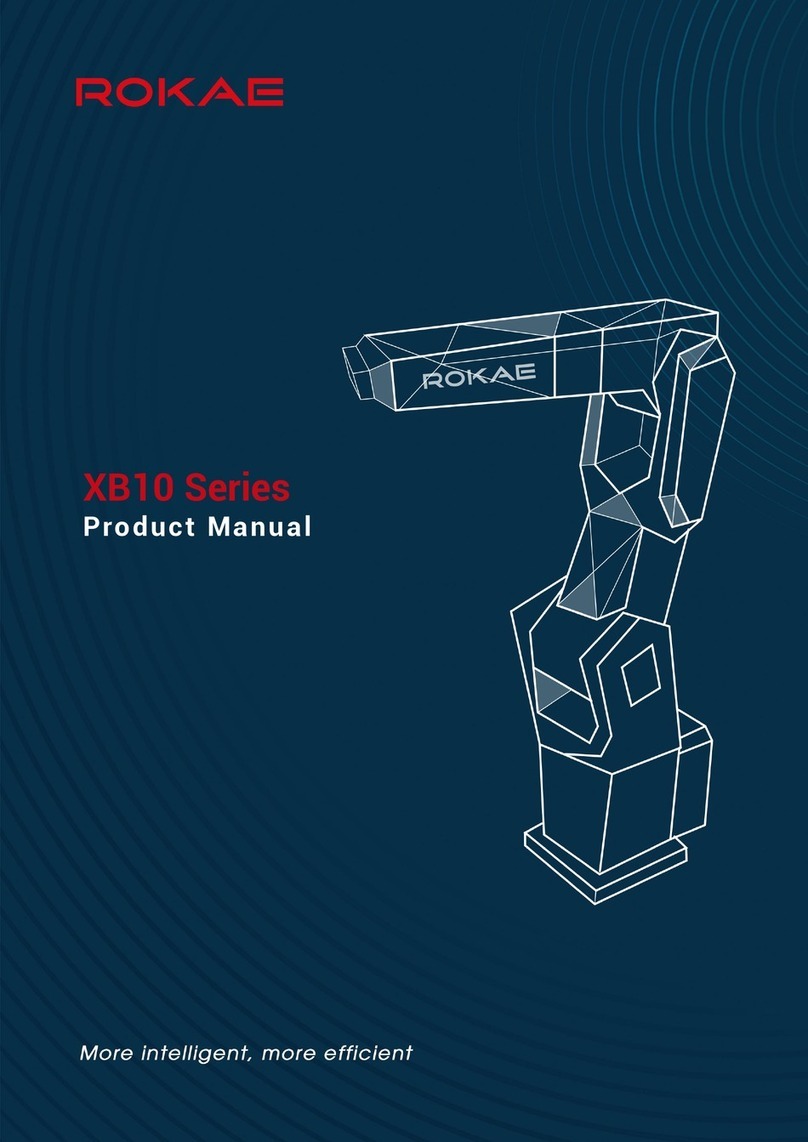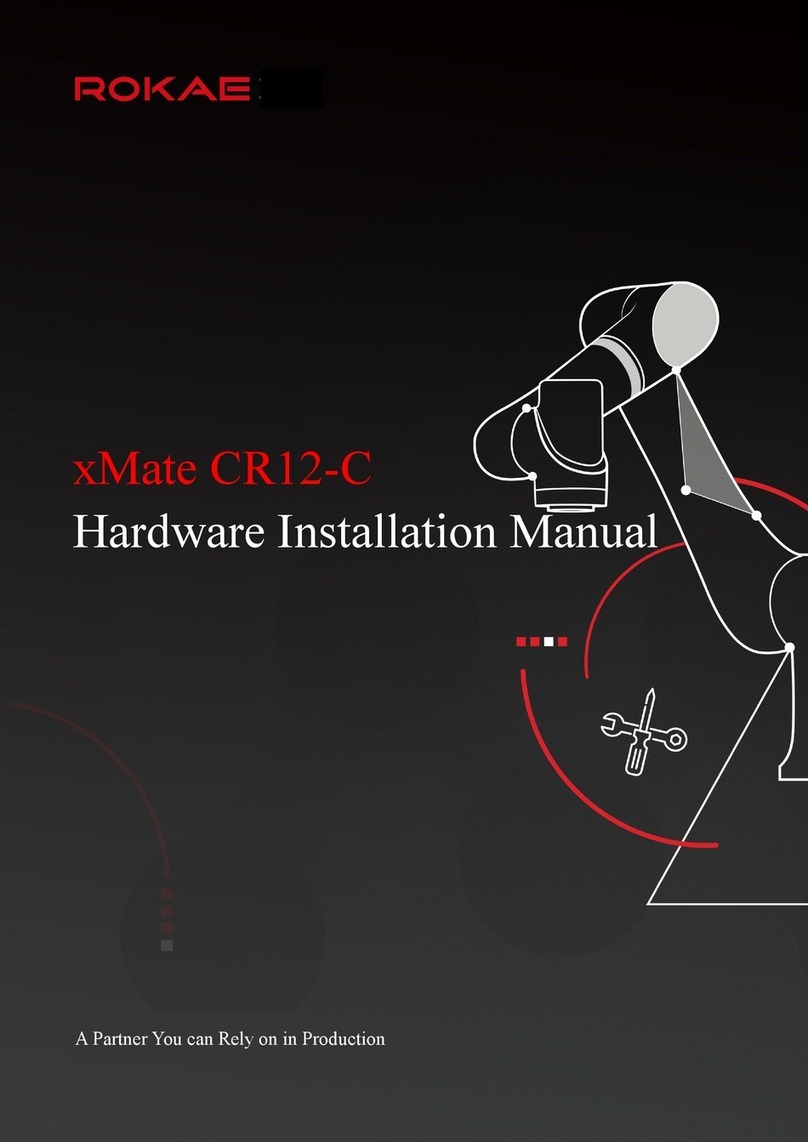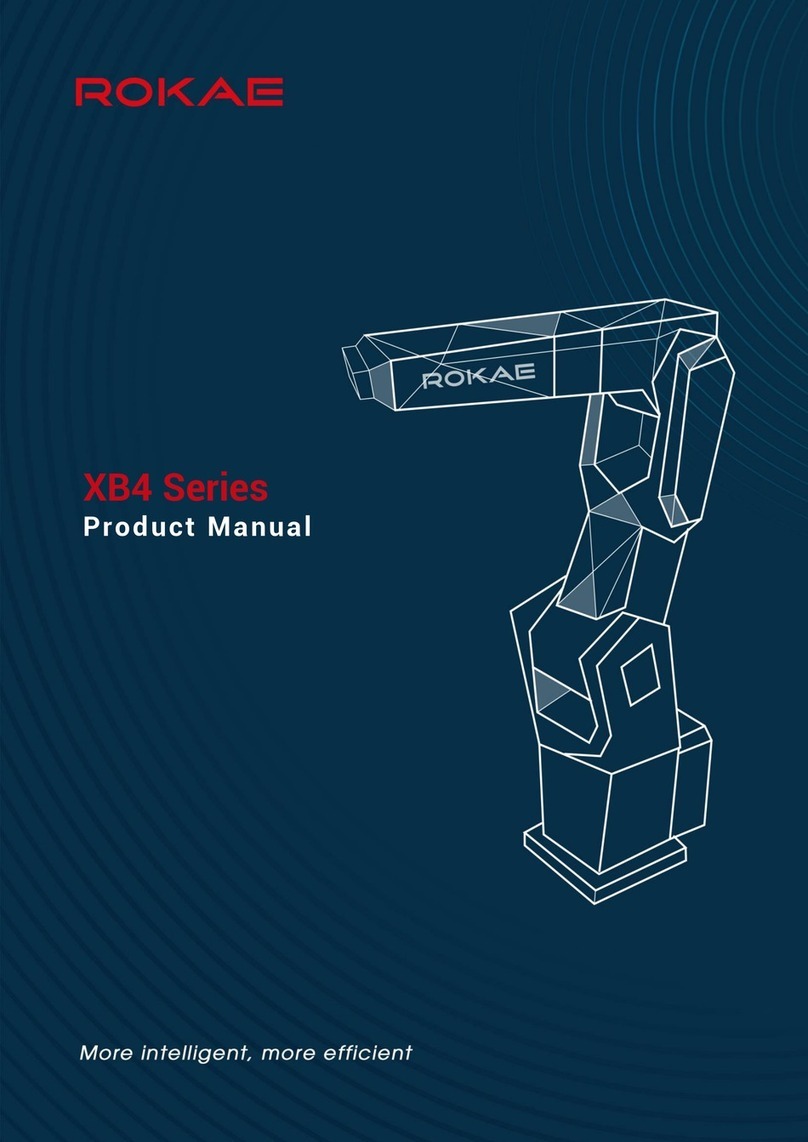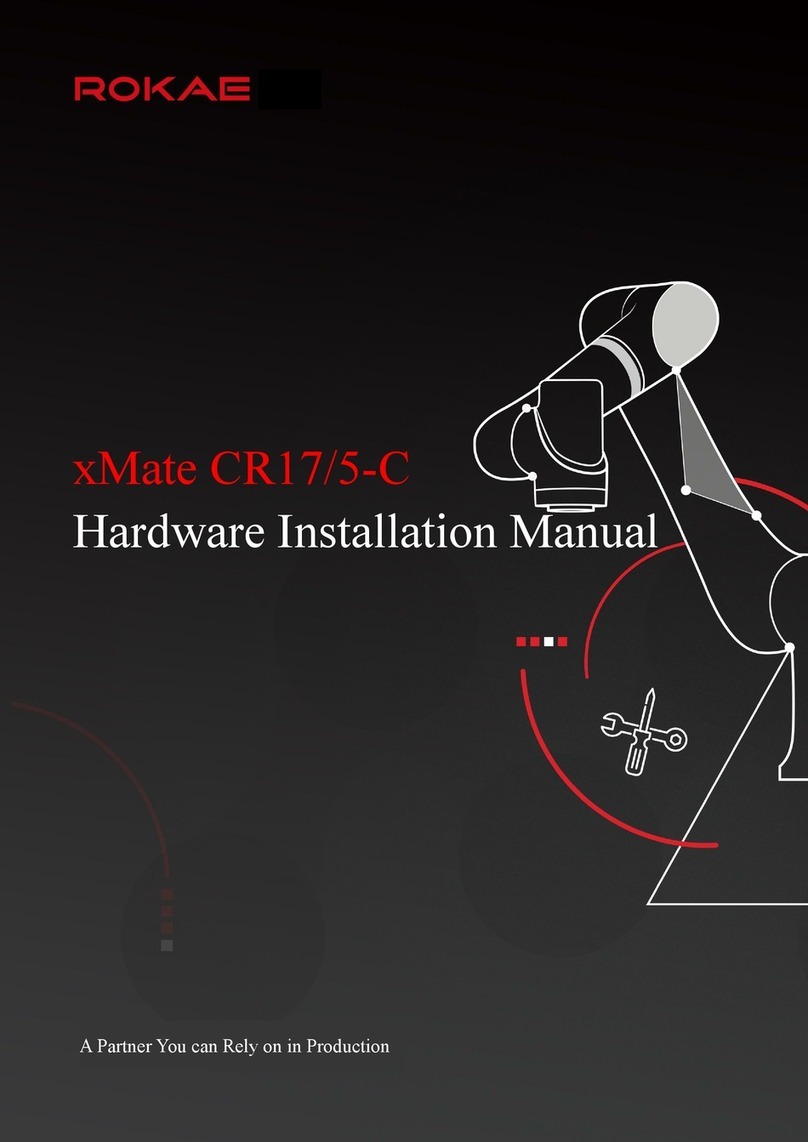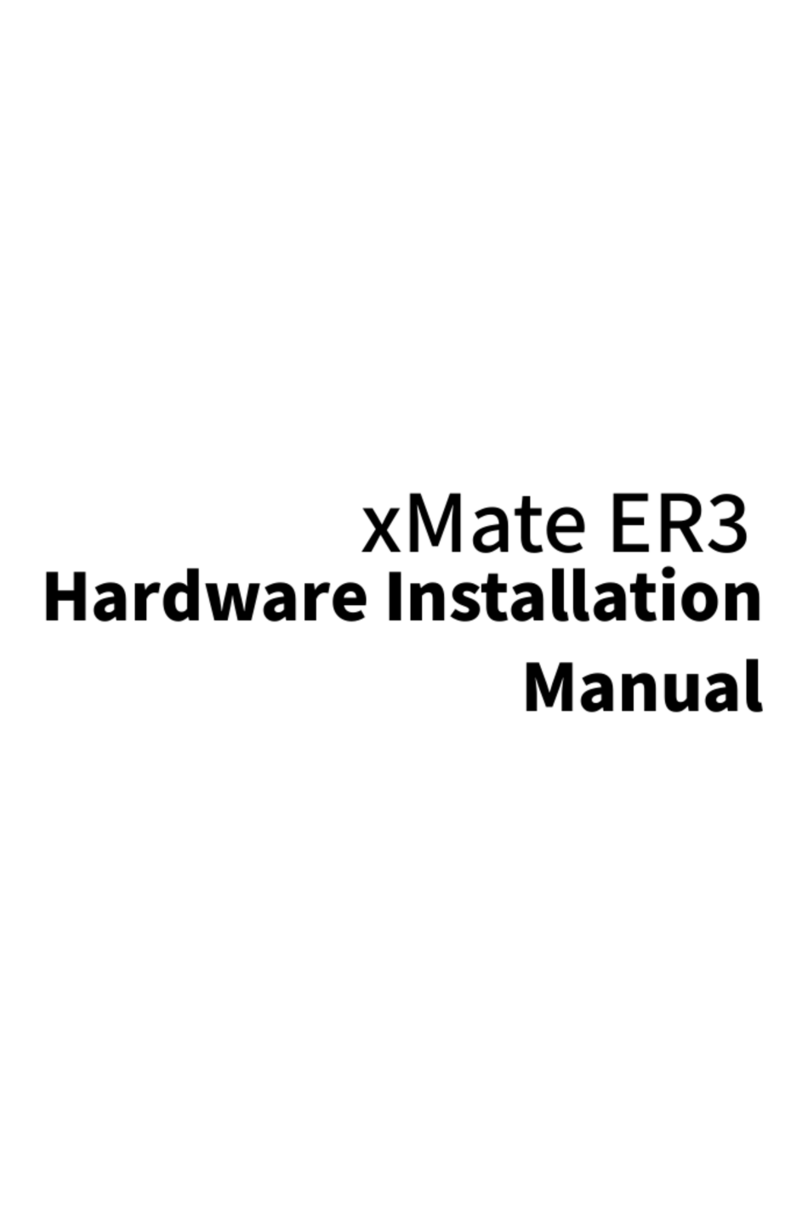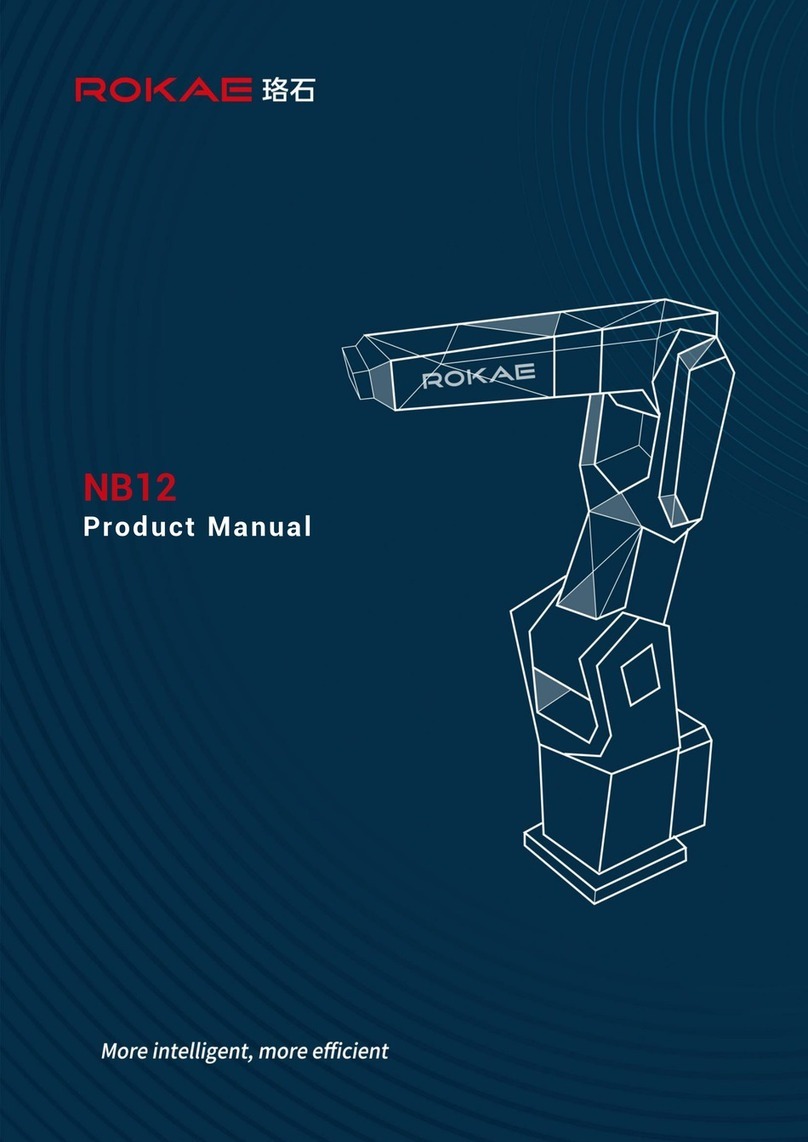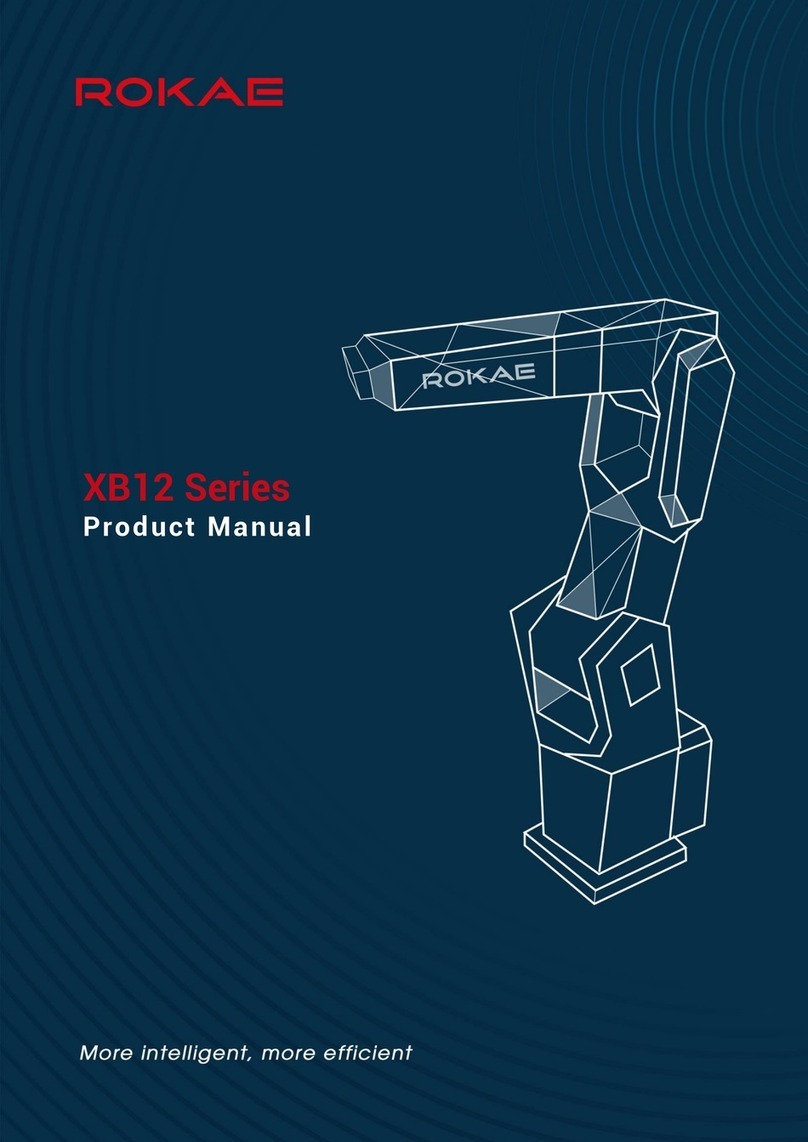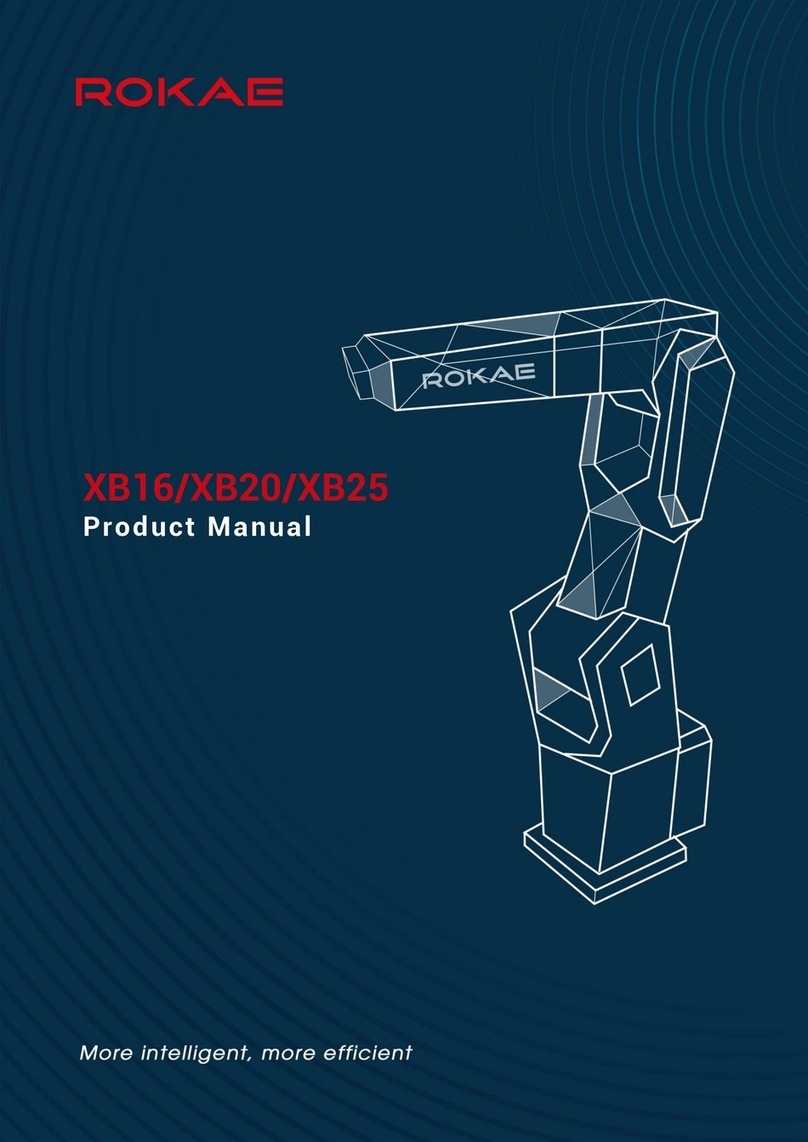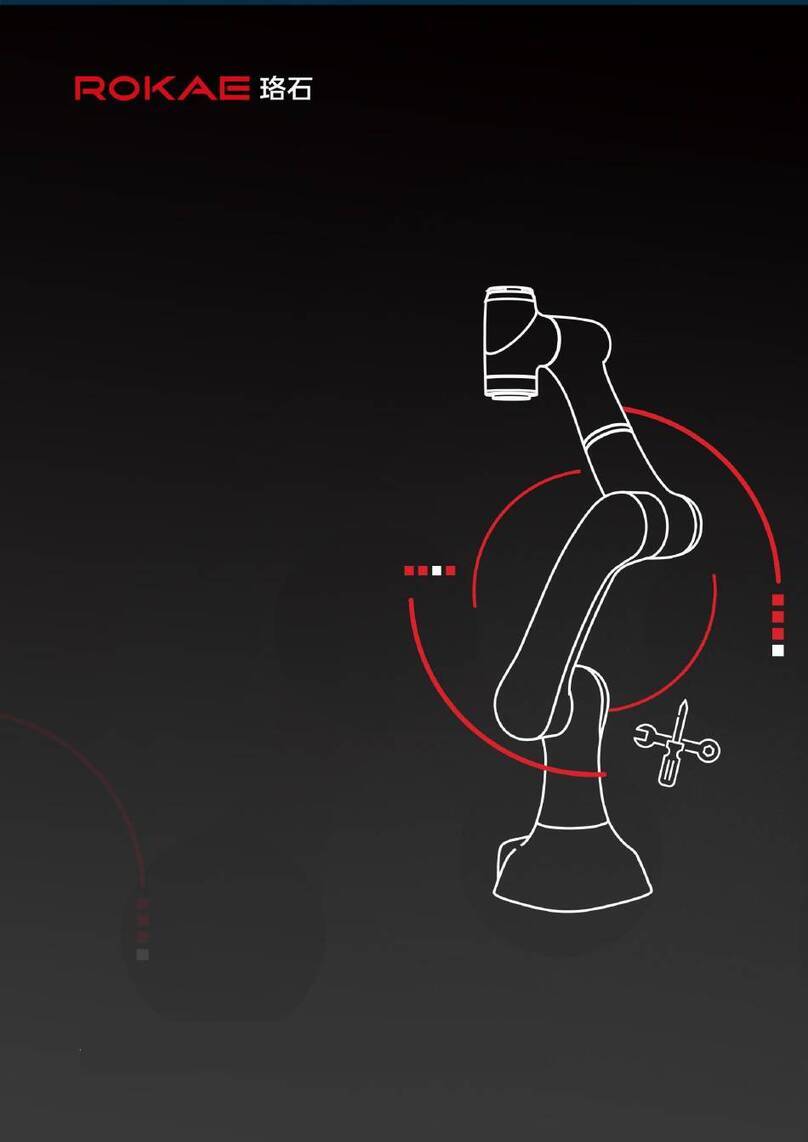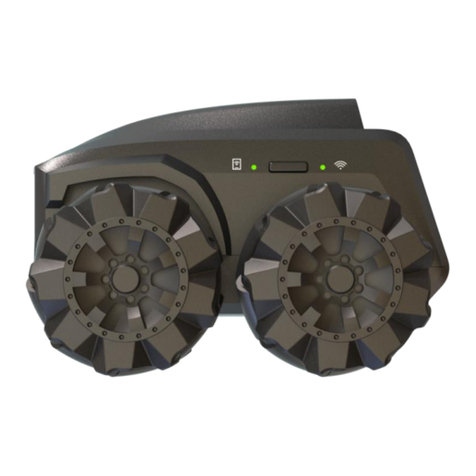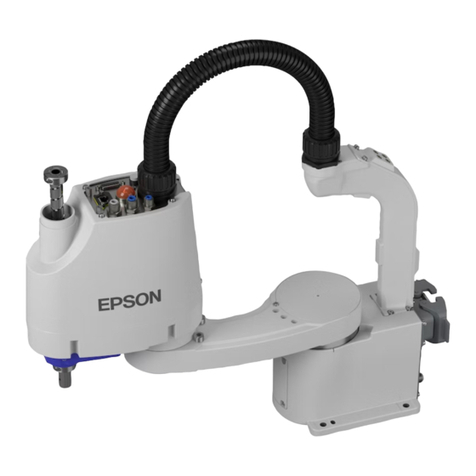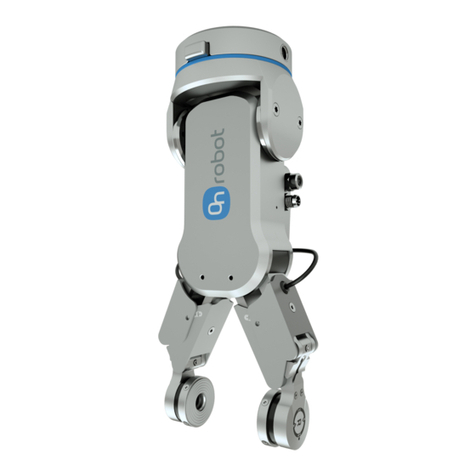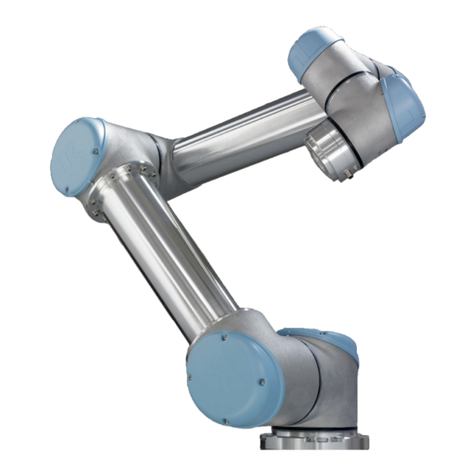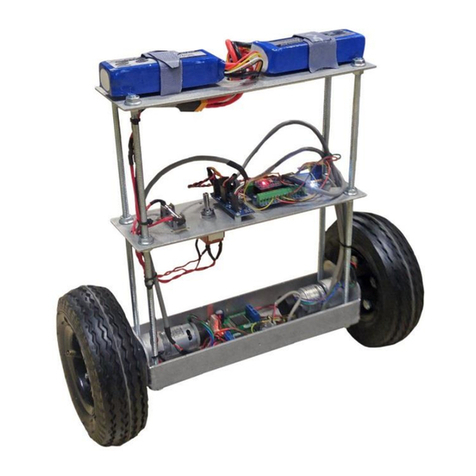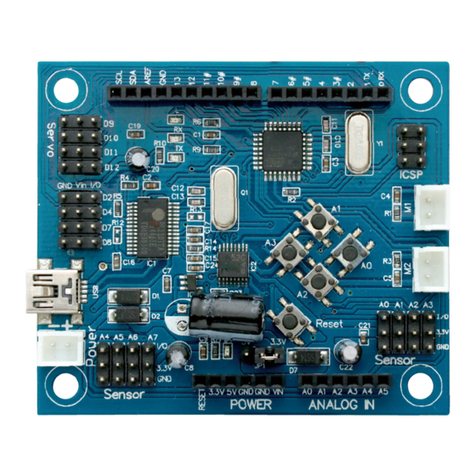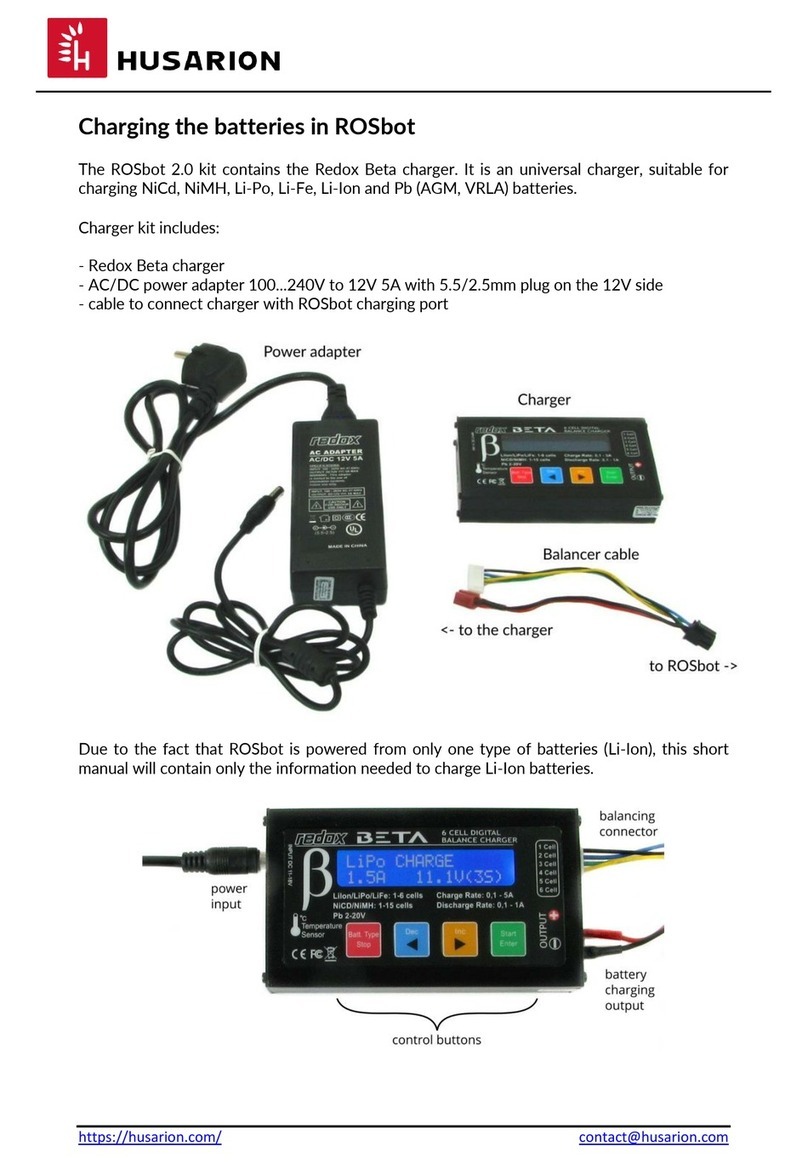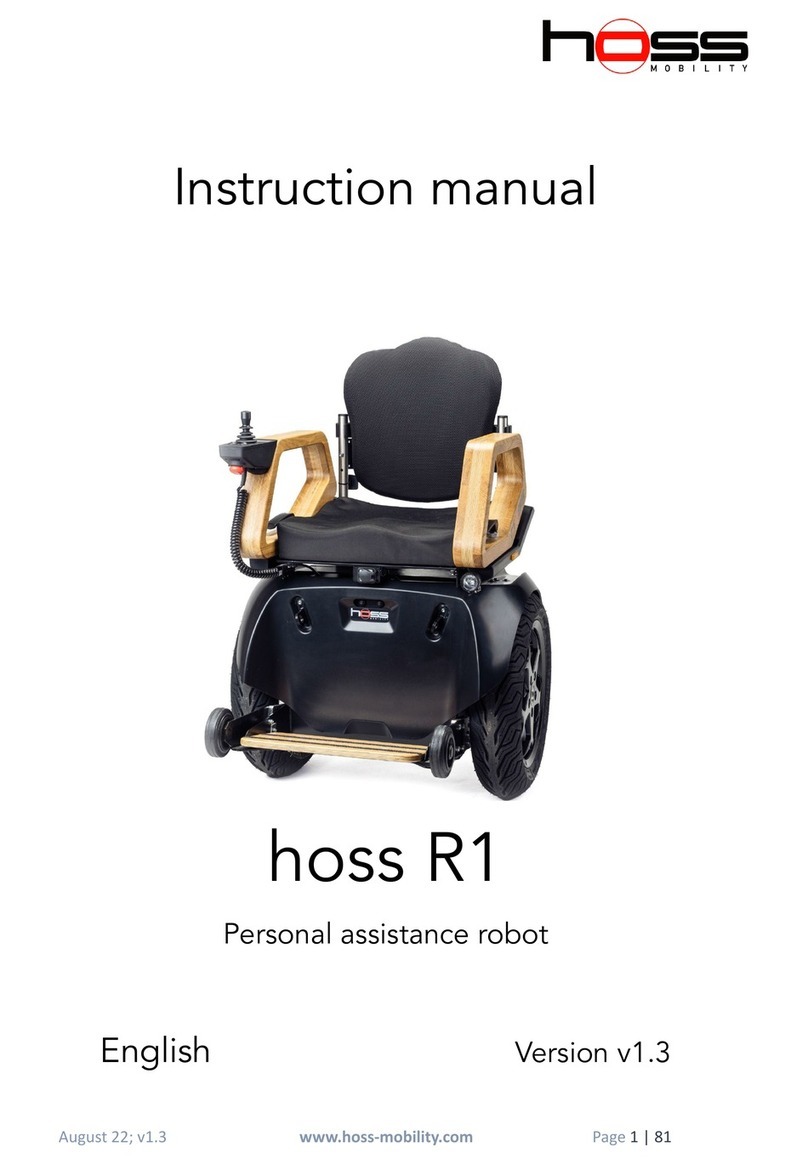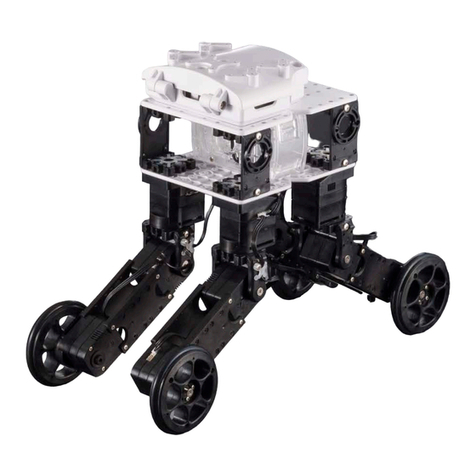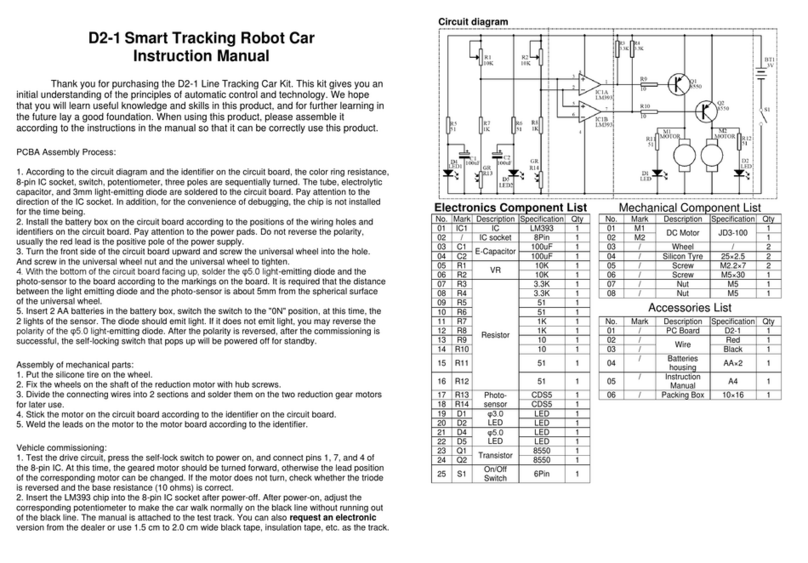
DOC- 00001751/A 2 Safety
xMate CR7-C Hardware Installation Manual 5
2.4.2 Safety precautions for operating the Teach Pendant
2.4.2.1 Safe storage of the Teach Pendant
The Teach Pendant no longer used shall be properly stored in a place where is far away
from the robot workstation, so as to prevent the operator from mistakenly believing that
this Teach Pendant is still connected to the robot and attempting to use it to stop the robot
in case of danger.
2.4.2.2 Teach pendant cable
The Teach Pendant and control cab are connected through a Teach Pendant cable. The
following provisions shall be observed when using the Teach Pendant in order to avoid
personal injury or equipment damage:
Make sure that the working personnel does not stumble over the Teach Pendant cable
so as to avoid dropping the Teach Pendant or making personnel fall.
Don’t squeeze the Teach Pendant cable, otherwise, its internal cores may be damaged.
Don’t put the Teach Pendant cable on the edge of the sharp objects, otherwise, the
cable sheath may be damaged.
Make sure that the bending radius of the Teach Pendant cable is greater than 100 mm,
otherwise, the cable may be damaged.
2.4.2.3 Permission of using the Teach Pendant
Generally, only those who have completed safety training and basic operation training can
have permission to use the Teach Pendant. The user permissions for operating the Teach
Pendant interface shall also be distinguished to ensure that the debugging personnel and
maintenance personnel can use the Teach Pendant correctly and reasonably according to
their work.
The control system is built-in with three user levels, namely Operator, Admin, and God,
with the operation permissions ranking from low to high. Switching from a low-privileged
user to a high-privileged user requires a password. Conversely, it is not required. A
high-privileged user can modify the password of a same- or lower-privileged user. The
password of an Operator-level user cannot be modified.
2.4.2.4 No Teach Pendant mode
When the No Teach Pendant mode is selected for the control system, special attention
must be paid to safety during debugging and programming. An emergency stop button
must be installed or placed within the reach of the operator and the signal of the
emergency stop button must be routed into the safe I/O port of the robot system so that the
person can protect the safety of himself/herself and the equipment by pressing the
emergency stop button promptly in case of emergencies.
2.4.3 Recovering from emergency stops
2.4.3.1 Description
In case of an emergency stop, a reset is required to return to normal operation. The reset
procedure is simple but important. It ensures that the robot system is prevented from
returning to production in a hazardous condition.
2.4.3.2 Emergency stop button and reset
The emergency stop button is located in the upper right corner of the Teach Pendant. It has
a latching feature that must be manually released in order to remove the emergency stop
condition of the robot. This can be done by rotating the button as marked.




















